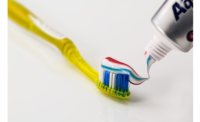FMCG Packaging Market to Grow at 4.2% CAGR to 2024

The fast moving consumer goods (FMCG) packaging market is estimated to grow at a CAGR of about 4.2% over the forecast period 2019-2024, cites a report from Research and Markets. According to the Business Association of Stanford Entrepreneurial Students, 84% of professionals working for fast-moving consumer goods are under more pressure to quickly bring new products to the market than they were five or 10 years ago. Thus, the role of FMCG packaging has gained greater importance because the packaging is as important as the product itself.
- FMCG companies are adopting various strategies to increase revenues and expand their customer base. For instance, the introduction of various types of the same product for different user groups. For example, Calcium Sandoz and Calcium Sandoz for women, Horlicks for older women and Junior Horlicks. This comes with a unique packing to a particular product that attracts the customers of different age groups.
- Moreover, the increasing demand from the growing e-commerce industry is creating a market for FMCG packaging. This sector’s growth is attributed to the rising demand for protective packaging for delivering small-sized products coupled with the convenient packaging options.
- However, environmental concerns regarding the use of specific materials such as plastics packaging that have a detrimental impact on the environment will hinder growth of the FMCG packaging market during the forecast period.
Packaging generally makes up 7-11% of the total costs of a product for most FMCG companies. Being a cost-sensitive market, the pressure for FMCG companies to reduce packaging costs is strong and they prefer plastic packaging over other materials. This covers the entire packaging value chain from raw material to post consumption disposal and treatment.
Also, with the increasing trend of pets being treated like family is creating huge market opportunities for the FMCG plastic packaging. The plastic tubs and cups supplant other packaging containers in wet food, due to easy-to-open peelable lids. In addition, flexible pouches with zip closures is widely preferred in both dry and wet pet food.
Looking for a reprint of this article?
From high-res PDFs to custom plaques, order your copy today!



